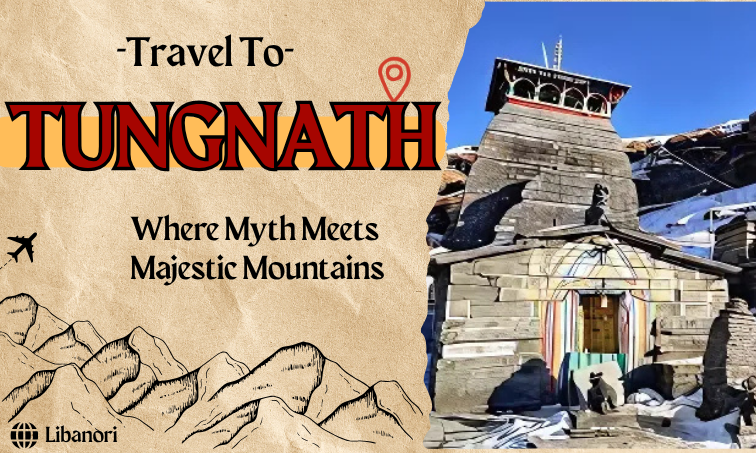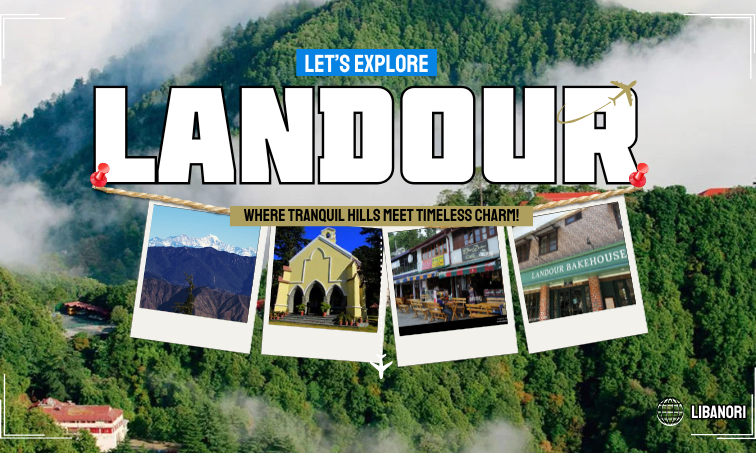Introduction
Perched up in the Garhwal Himalayas, at an altitude of 12073 feet above sea level, lies Tungnath. Serenely embellished on Chandranath Parvat, it is the highest Shiva temple in the world. The scenic terrain around is wrapped in mysticism and invites voyagers into the heart of India’s awe-inspiring sacred peaks.
Whether you are seeking a physical adventure or a journey that can offer a spiritually transformative experience, this destination is a perfect fit. Revered as one of the Panch-Kedar, it beckons pilgrims and proffers a journey that transcends the ordinary. A place where the mind is stilled by tranquility and the spirit is uplifted by the panoramic view of the Himalayas.
Let’s dive in and unravel aspects of an expedition that is a perfect blend of spirituality and adventure.
The Legend and History of the Temple
The story of this Shiva Temple is a significant element of Indian Mythology. As per the legend, after the epic battle of ‘Mahabharata’ was over, the Pandavas went on a quest to seek Lord Shiva’s forgiveness for the mayhem caused by the war. Shiva was trying to dodge the brothers, and in order to do so, he transformed into a bull and vanished into the mountain range of the Himalayas. Parts of his body (which were those of a bull) appeared at five locations, which are now reverentially regarded as the Panch-Kedar temple:
- Kedarnath has the hump.
- Tungnath got the arms.
- Rudranath secured the face.
- Madhyamaheshwar temple worships the navel and stomach.
- Kalpeshwar procured the hair.
Adi Shankaracharya rediscovered the Bahu (arm) temple in the 8th century CE and established the ritual of worship, and the temple remains an important Shaivite shrine. Tungnath translates to ‘Lord of the Peaks’, which perfectly represents the mystical aura of the pristine landscape where winds whisper and snow-capped vistas stretch endlessly into the horizon.
How to Reach Tungnath: Routes and Transport
To reach the temple, you need to first get to Chopta, which is in Uttarakhand. It is known as the ‘Mini Switzerland ’ because of its it’s gorgeous scenery and enchanting meadows. Here’s how you can make it to:
By Road
You would have to trek your way to Tungnath after reaching Chopta.
–Delhi: The distance is around 450-470 km, and the route suggestion you can opt for is to reach the temple Delhi – Meerut – Muzzafarnagar – Haridwar – Rishikesh – Devprayag – Srinagar – Rudraprayag – Ukhimath – Chopta.
–Mumbai: The distance would be 1800+ km. Try connecting to Delhi or Dehradun, as there is no direct travel route from Mumbai. So the route is as follows:
Mumbai – Dehradun – Narendranagar – Chamba – Tehri Dam – Ghansali – Mayali – Tilwara – Augustmuni – Ukhimath – Chopta.
You can also connect to Rishikesh via Dehradun for a shorter route.
–Kolkata: The distance would be around 1660 km. Here’s the suggested route:
Kolkata – Varanasi – Lucknow – Bareilly – Haridwar – Rishikesh – Devprayag – Srinagar – Rudraprayag – Ukhimath – Chopta.
By Air
The nearest airport would be Jolly Grant Airport, located in Dehradun. The airport is 260 km away from Chopta.
By Train
The closest railway station is Rishikesh or Haridwar, both stations are well connected with major cities. Here are some trains you can consider.
- Doon Express: It departs from Howrah and terminates at Rishikesh
- Kumbha Express: moves from Howrah to Haridwar
- Mussoorie Express: Goes from Delhi to Dehradun.
Traveling Tips and Essentials
Here are some tips to make your journey comfortable, responsible and efficient:
- Make sure that your body acclimatizes to the altitude, and choose your track accordingly.
- Try to avoid trekking after dusk.
- Do not litter the area, be sensitive towards the fragile mountain environment.
- Be mindful of the local culture and customs, especially while visiting the temples.
Before you embark on your journey, make sure that you are equipped with the essentials, which will ensure a hassle-free trip.
- Warm layers; even in the summer season, nights are cold.
- Rain gear as the weather in the hills can be unpredictable.
- Good trekking shoes to avoid sore soles.
- Water, snacks, and a basic first aid kit.
- Sunscreen, sunglasses, and a hat.
Best Time to Visit
May to November is the ideal time for visiting the site. The weather is pleasant, and the skies are clear. The meadows are blooming with beautiful flowers.
During the monsoon season, the treks become slippery, and it is risky to navigate through them. In winter, the place is covered in snow, due to which temples shut down, making it not ideal for pilgrims.
Activities for fun
- Around the temple, you can enjoy trekking to Chandrashila Peak and enjoy a mesmerizing view of the Himalayas.
- Camping in tranquil meadows full of lush flora is one of the most fulfilling experiences ever.
- Birdwatching.
- You can visit Deoria Tal, a beautiful lake worth visiting.
Final Thoughts
Tungnath offers a unique blend of history, mythology, and stunning vistas. This destination has it all. The trek is accessible, the views are enchanting, and the temple’s ancient aura is mesmerizing. So pack your bags, tie your laces, and let the magic of Tungnath transform your journey into a memory that will last a lifetime.
Explore the mysticism of the revered set of Shiva temples, 12 Jyotirlinga.
Frequently Asked Questions
Absolutely! The trek is short and well-marked, making it ideal for people with average fitness.
Check local conditions accordingly hire a guide.
Small tea stalls and dhabas operate in Chopta. Carry snacks and water for precautionary purposes.
Limited; expect minimal connectivity higher up.
Tungnath is situated at an altitude of approximately 3,680 meters above sea level.
Refresh Date: August 21, 2025



